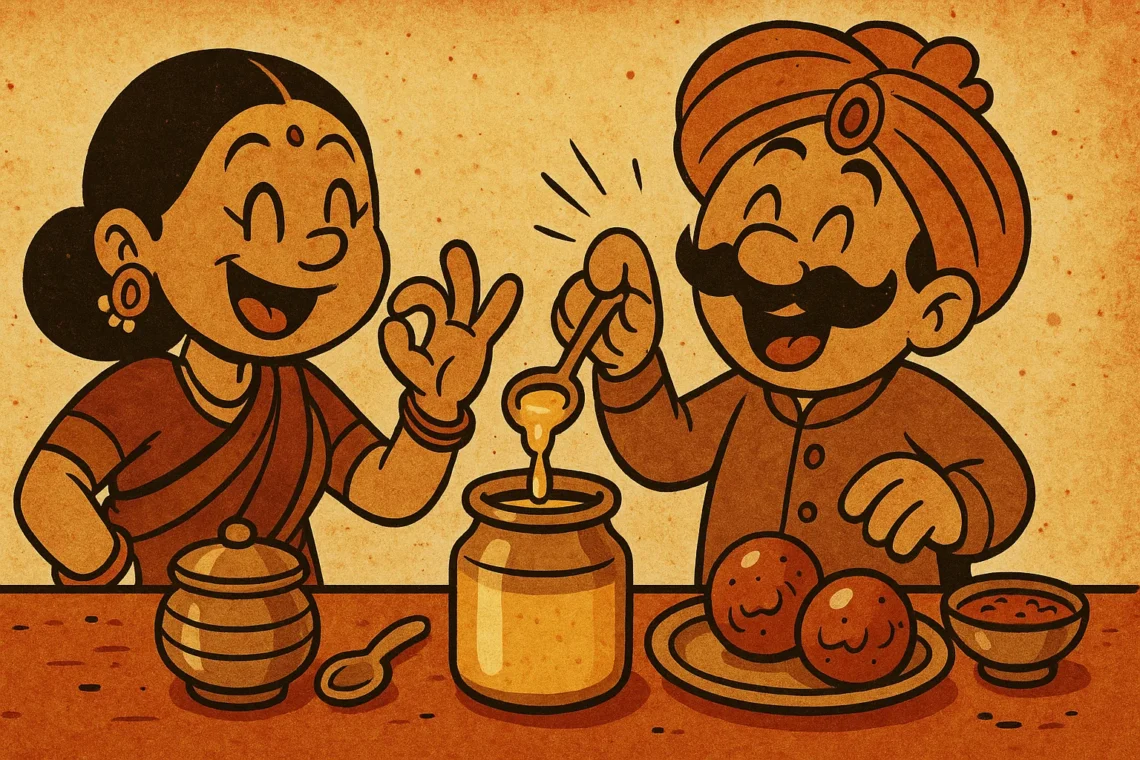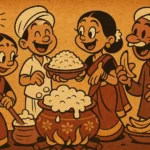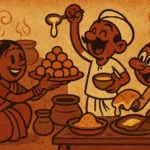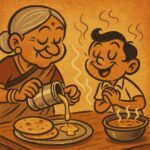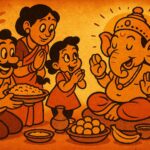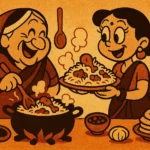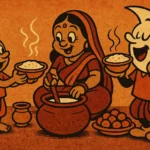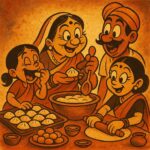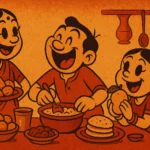Ghee doesn’t ask for attention. It doesn’t sit on the table in pretty jars or announce itself with loud aromas. But when it arrives—drizzled over dal, melting into hot rotis, or floating like gold on top of warm pongal—you know something just changed. Something quiet. Something holy. Because ghee in an Indian kitchen isn’t just fat. It’s feeling. And more often than not, it’s a blessing disguised as food.
We never measured ghee at home. No tablespoons, no calorie counts. You just poured until your heart said “bas.” A small spoon for everyday meals. A generous ladle for festival feasts. And always, always a final drizzle—right before serving, after the stove was off, like a benediction. “Thoda ghee daal do,” my mother would say, no matter what was on the plate. And just like that, a regular meal would shift into something softer, rounder, more forgiving.
The First Sign of Care
When someone makes you khichdi and adds ghee without asking—that’s care. When you break a hot chapati and the ghee runs down your fingers—that’s love. When your bowl of rice arrives with a spoonful already melting in the center—that’s someone saying, “I’m thinking of you.” Even hospital meals, usually stripped of everything comforting, often come with a thin trickle of ghee—because recovery needs warmth, and nothing warms like ghee.
My grandmother used to store hers in a steel dabba, tucked away behind the spice jars. It always smelled faintly sweet, nutty, almost smoky. Made at home, of course—boiled, simmered, strained, and set aside like treasure. She added it to everything. Not to make it richer, but to make it right. Even now, when I open a fresh jar of ghee, I feel like I’ve opened a memory.
Ritual, Not Ingredient
Ghee shows up in rituals before it shows up in recipes. It lights the diya. It marks the forehead. It’s swirled into rice during shraddh ceremonies and spooned over sweets before they’re offered to gods. It’s the first thing babies taste in some traditions. It’s the last thing the departed are given. It bookends life, in ways few ingredients do.
And yet, for all its sacredness, it’s also deeply everyday. It sits quietly in a tin next to the stove. It’s part of school tiffins, temple meals, wedding feasts, and sick-day food. It never overwhelms. It just binds. Envelops. Softens.
Even in America, Still Sacred
In my Austin kitchen, I keep a jar of ghee close to the stove. Not imported. Not fancy. Just something I made one quiet Sunday, letting butter simmer until it turned golden and began to smell like home. I don’t use it for everything—but when I do, I pause. Stirring it into dal. Pouring it over cracked wheat. Brushing it on a paratha with the back of a spoon. It’s never just a step in the recipe. It’s a gesture. A way of finishing, of offering.
Friends ask, “Why ghee?” I want to tell them: because it tastes like memory. Because it feels like protection. Because it connects every cook I’ve known—from my mother to hers to the auntie who once sent over pongal when I had a fever. Because when you don’t have the words, a spoonful of ghee says everything.
So yes, ghee is rich. It’s flavorful. It’s practical. But most of all, ghee is a blessing. A soft, golden whisper that turns food into care—and meals into moments you carry forever.
Born in Mumbai, now stir-frying feelings in Texas. Writes about food, memory, and the messy magic in between — mostly to stay hungry, sometimes just to stay sane.

